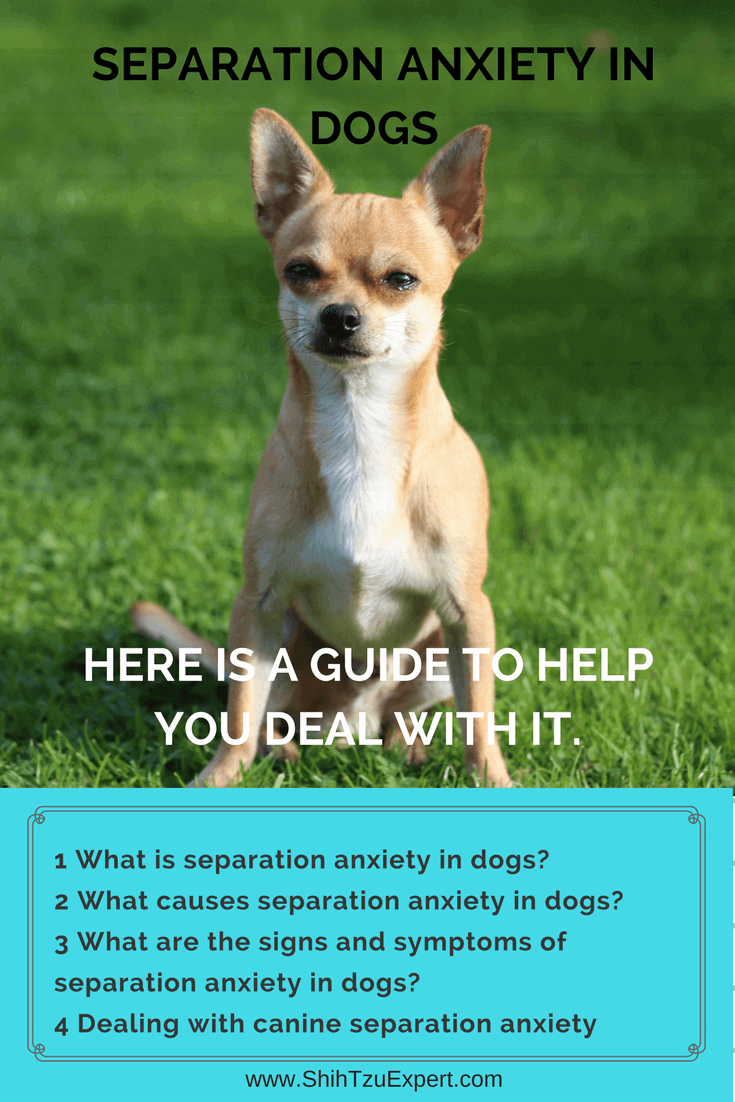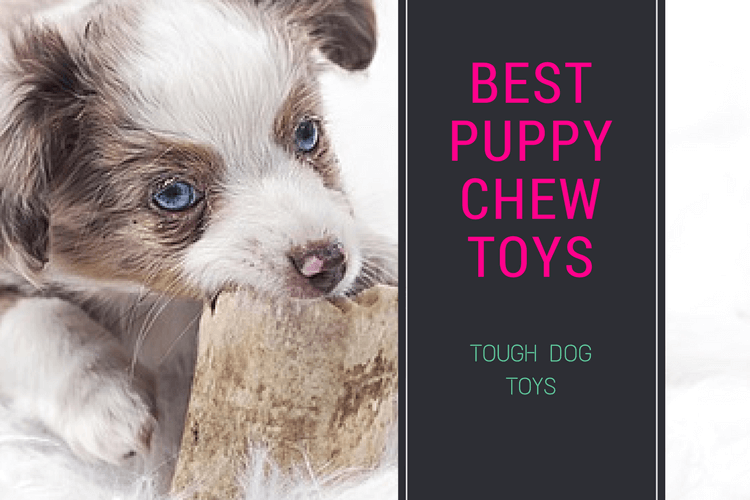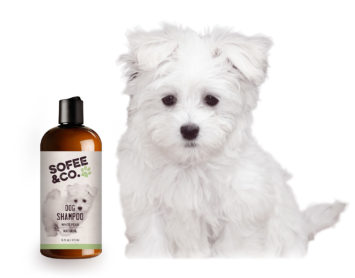Quick Summary
If you are looking for a Quick and Easy but a very Effective Long term solution that does not cost a fortune, then The Furbo Dog Camera is our recommendation.

Saying good-bye to your dog for a few minutes or six hours should be non-eventful, but for some dogs, a distressing panic sets in. It is heartbreaking for both owner and pet, and there are various reasons for it. Let’s look at what leads up to separation anxiety in dogs, and what can be done about it.
What is separation anxiety in dogs?
It is important to be able to tell the difference between true distress in your dog, and simulated separation anxiety — behavior which is actually learned because they know they can get a desired result from you, their guardian. That desired result is constant attention, even if your dog is being punished for that behavior.

Bad behavior in your absence doesn’t necessarily mean separation anxiety. Your dog might be alarmed by an unusual noise while you are gone. He may be full of energy from not getting enough exercise, and finds joy in tearing apart a pillow. Your dog may pee in the house if he has been left too long without going outside. If the bad behavior doesn’t happen all the time, chances are it is not separation anxiety.
Do we actually participate in our dogs’ separation anxiety? Cesar’s Way explains that if we give our dogs a lot of attention when we leave, and then again when we come home, we are actually provoking anxiety. We are telling our dogs that it is good to be distressed when we leave, because they will get attention.
What causes separation anxiety in dogs?
All dogs have an instinctual pack mentality. When they become part of our families, we are their pack, and it is essential to them to be connected to us. Through good training, we can alleviate their fears of losing the pack.

Separation anxiety is also related to a dog’s perception of time. Our world is based on events while a dog’s world is based on environmental changes; they link sounds, smells, and other physical sensations to time. If dogs cannot relate a new event to a familiar sensation, such as your voice, touch and smell, it causes them fear and stress. So if we abruptly leave without having created first a comforting routine for our dogs, they are going to experience separation anxiety.
Since dogs are incredibly sensitive to scent, they can tell that the longer we are gone, the less our scent lingers, and that causes distress.
What are the signs and symptoms of separation anxiety in dogs?
Separation anxiety usually occurs within the first 40 minutes that you are gone.

There is a period of disruptive or destructive behavior, anywhere from not eating to biting paws. Your distressed dog might howl and bark all the time you are gone. He might pee in the house or even defecate. He could scratch walls and chew on furniture or himself. Or he could try to escape. These are all signs that further training is necessary, but the more important matter is that there is distress.
There are additional instincts which are distinctively stronger in some breeds than others, and these instincts can show up in destructive ways when dogs suffer from separation anxiety. Dogs who are bred to guard their owners become aggressive, while terriers instinctively dig. Dogs bred to hunt, like pointers, will carry items other than their toys around the house. Dogs bred to guard will become aggressive and noisy. In addition, there are many dog breeds, especially small lap dog breeds, who are bred as companion dogs and are particularly sensitive to any absence from their owners.
Dealing with canine separation anxiety

With the incredible variety of dog breeds available, there is a dog to suit your lifestyle with regard to leaving the home. If your dog is experiencing some mild separation anxiety, there are some easy remedies: some dog breeds like the Poodle and Miniature Schnauzer are intelligent and inquisitive, so they need to have lots of mental stimulation while you are gone. Physically active dogs like the Jack Russell Terrier or Beagle are best left alone when they are tired out from lots of exercise. Hunting dogs like the game of finding small portions of kibble hidden around the house or yard.
But what can you do when the separation anxiety is more dramatic?
How to treat separation anxiety in dogs
Getting rid of separation anxiety in dogs involves more than just training. Psychology plays a major role.
Dog treats are high on the list of effective mood changers, especially those that take a long time to eat (Pets.webmed.com). There are rubber toys that can be stuffed with doggy edible food like a frozen banana or kibble, to give your dog a mental exercise as well as a reward.

- Make your “departing signals” a common activity. Does your dog whine or pace when you are grabbing your purse or getting your keys? These little activities signal to your dog that you are leaving. The more these activities are done outside of the context of departing, the less importance your dog will place on them and the more relaxed he will be. Do these activities often, even when you are not leaving, and they will no longer become signals of fear and anticipation to your dog.
- Start acclimating your dog with very short absences of a few minutes. Start with leaving the room and teaching your dog to stay. While leaving the room, use your pre-departure clues. Be calm and reward only good behavior.
- Progress to leaving the house through the back door for 15 to 20 minutes, then the front door. At this point, introduce a food/toy reward. At this point you might even hop in the car and drive around the block. Gradually increase your length of departure.
- When you have slowly built up to absences of about 90 minutes with no separation anxiety, you are most likely able to leave for four to eight hours.
Be sure there is time enough between your “leaving” exercises to get your dog nice and calm. Likewise, be sure you are calm when leaving so that there is no cue from you that the departure experience is going to be stressful.
Do separation exercises a few times each day, and optimally at the times you would normally leave the house. Frequent training with rewarding will be perceived by your dog as positive attention.

During the training period, there can be no other opportunities for your dog to experience separation anxiety, so that he can learn how to comfort himself. That means you will need to bring your dog to work with you or on errands, or have someone sit with the dog while you are gone.
What happens in cases of severe separation anxiety in dogs?
Veterinarians can prescribe medication such as fluoxetine for separation anxiety, but this is only a short-term solution. Medication must be used along with training for long-term results that provide comfort to your dog.

Puppy separation anxiety
By the time you receive him, your puppy will have already gone through one major separation anxiety experience — leaving their litter. And our first instinct is to cuddle, nurture and protect our puppies, and keep them by our sides. But crucial to your puppy’s well-being and extended confidence into adulthood is training from the very first days of joining your family. It takes a lot of patience, and separation anxiety is one of the main reasons people turn their puppies in to a shelter or rescue organization.
Crate training is a great way to provide a safe sanctuary for your puppy, while you are at home and away.
Puppies are full of energy, and getting them tired out before you leave them is beneficial. The American Kennel Club recommends mental exercise games for your puppy as well as a key to building self-control and confidence. This will help minimize separation anxiety.
Separation anxiety in older dogs
Separation anxiety in pet owners
- Set up a dog cam;
- Keep photos of your pup on your laptop wallpaper and cell phone;
- Watch videos of your pup; or
- Skype your pet!
Because we love our dogs, and our dogs love us, some separation pangs are inevitable. When leaving our dogs for minutes or hours causes true separation anxiety, it needs to be addressed for the comfort and safety of your dog above all else. A confident, secure dog allows for an overall wonderful canine companion experience, home and away.
Dealing with Canine separation anxiety
And to ensure that you can keep an eye on them, even when you’re not there, the camera comes with night-vision livestream and dog recognition technology that will not only let you know when your fur-baby is doing a particular thing, but also lets you catch a dog selfie. Now you don’t have to go forever without seeing your pup. This is great for people who might have to spend a long time away from their animals, due to deployments, vacations, or job travel. And one of the coolest features of this camera is its ability to send treats to your pet. So, you can have the full interactive experience with your dog, even while being far away. You can be there, whenever and from wherever, comfort your pup and ensure that they know that they are safe and loved, the solution for separation anxiety for you and your pet.

![12 Best Dog Foods for Toy Breeds [Buyer's Guide] 12 Best Dog Foods for Toy Breeds [Buyer's Guide]](https://shihtzuexpert.com/wp-content/uploads/2019/05/3-5.jpg)


